Do you ever wonder why some organizations seem to achieve their goals effortlessly while others struggle to make progress? The secret lies in having well-defined organizational goals. When an organization has clear objectives, everyone knows what they are working towards and can align their efforts accordingly.
This not only increases productivity and efficiency but also fosters a sense of direction and purpose among employees. Well-defined organizational goals are vital for success in any business or institution. They provide clarity and focus for both individuals and teams within an organization while fostering a sense of purpose among employees.
By creating SMART goals that align with your company’s vision and values, you enable everyone to work more efficiently towards achieving those objectives. So take the time to define your organizational goals carefully – it will set you on the path towards success!
What Are Organizational Goals? Understanding Organizational Goals
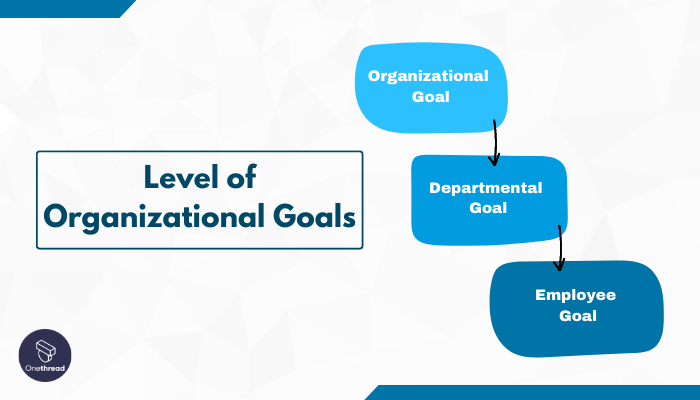
Work organizational goals are the strategic objectives determined by management to guide all teams within an organization towards a shared direction. By setting these goals, teams align themselves towards achieving collective objectives and ensuring the overall prosperity and efficiency of the organization. Organizational goals are further broken down into departmental and employee-level goals.
Establishing a Cohesive Work Culture
As a leader, it is essential to identify and prioritize certain goals that contribute to the work culture within the organization. These principles and objectives serve as the foundation for fostering a cohesive and collaborative environment among team members.
Leadership’s Role in Setting Goals
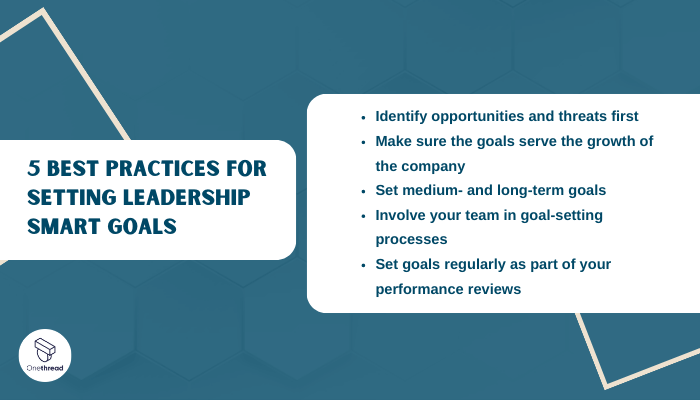
In a leadership position, it is crucial to determine the goals that will guide the organization towards its desired outcomes. These goals should align with the organization’s vision and mission and should be communicated effectively to ensure the entire team is on board.
By establishing clear organizational goals, leaders create a sense of direction and purpose for teams, fostering collaboration and synergy among team members. When everyone is working towards a shared objective, the overall performance and productivity of the organization improve significantly.
Aligning Goals for Future Success
Setting work organizational goals ensures that teams are focused on achieving specific milestones and targets, which ultimately contributes to the long-term success and growth of the organization. It provides a roadmap for teams to follow and enables them to measure progress and make adjustments as necessary.
Organizational goals play a critical role in defining the working objectives for all teams within an organization. Effective goal setting and communication are key aspects of leadership that contribute to a cohesive work culture and enhance team performance.
Why Are Organizational Goals Important to Achieve Business Success
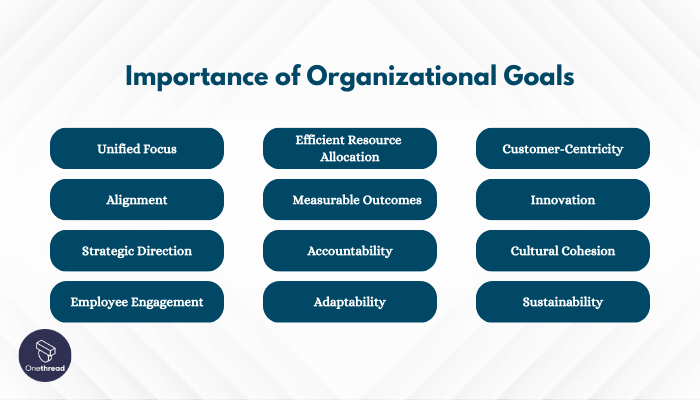
Organization-wide goals are essential for businesses as they provide employees with a roadmap, direction, and motivation to achieve collective objectives. These goals enable businesses to evaluate progress, enhance productivity, and foster a sense of purpose and engagement among employees.
Here’s why organization-wide goals are crucial for achieving business success:
- Unified Focus: When every department and individual is working towards the same goals, it creates a unified sense of purpose. This ensures that efforts are synchronized, minimizing conflicting priorities.
- Alignment: Organization-wide goals align various departments and functions, promoting collaboration rather than silos. This collaborative approach optimizes resource allocation and prevents duplication of efforts.
- Strategic Direction: Clear organization-wide goals provide a strategic direction for the business. They help in making decisions that are in line with the long-term vision and avoid ad-hoc or short-sighted choices.
- Employee Engagement: Clearly communicated goals give employees a sense of purpose and direction. Engaged employees are more motivated, productive, and committed to achieving collective success.
- Efficient Resource Allocation: With a shared understanding of goals, resources such as budget, manpower, and time can be allocated more efficiently. This prevents resource wastage and enhances productivity.
- Measurable Outcomes: Well-defined organization-wide goals come with key performance indicators (KPIs) that can be measured. This allows for objective assessment of progress and success.
- Accountability: Clear goals establish accountability across the organization. Departments and individuals are responsible for their contributions towards achieving the shared objectives.
- Adaptability: In a dynamic business environment, goals may need adjustment. Organization-wide goals offer a framework for adapting to changing circumstances while still pursuing the overarching vision.
- Customer-Centricity: Goals often include delivering value to customers. Organization-wide goals prioritize customer satisfaction, enhancing the company’s reputation and market position.
- Innovation: Shared goals encourage innovative thinking to overcome challenges and seize opportunities. Employees are motivated to find creative solutions that align with the broader vision.
- Cultural Cohesion: Organization-wide goals contribute to fostering a strong company culture. Employees identify with a shared mission, which strengthens the company’s identity and values.
- Sustainability: Goals that consider social, environmental, and ethical aspects drive sustainable business practices. This can lead to positive impacts beyond financial success.
Briefly speaking, organizational goals serve as a guiding star that illuminates the path to business success. They create a sense of unity, purpose, and direction that empowers the entire organization to work cohesively towards achieving meaningful outcomes.
SMART Ways to Set Organizational Goals
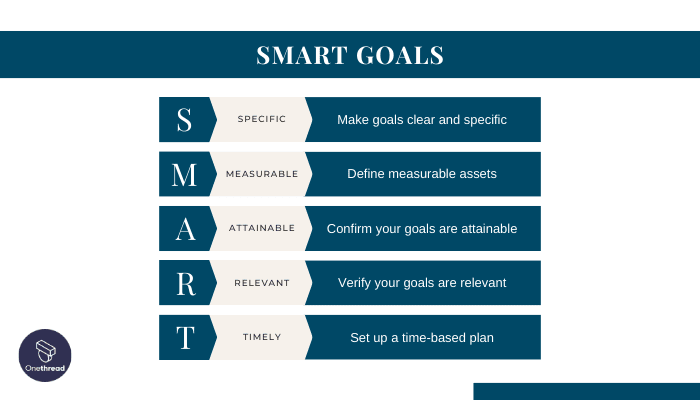
By applying the SMART principles—specific, measurable, attainable, realistic, and time-based—organizations can effectively set and manage goals. These guidelines foster clarity, motivation, and accountability, leading to increased productivity and success in achieving organizational objectives.
1. The Key Principles for Effective Goal Setting
Setting organizational goals requires careful consideration to ensure they are well-defined and achievable. By following the SMART approach, you can create goals that are specific, measurable, attainable, realistic, and time-based.
These principles provide a framework for setting goals that motivate teams and lead to successful outcomes.
2. Specific Goals Provide Clarity and Direction
Organizational goals should avoid vagueness and be as specific as possible. A specific goal establishes a clear outcome and provides a well-defined course of action.
For example, setting a goal such as “Creating at least 30 backlinks this week” is more effective than a vague goal like “Stepping up our branding game.” Specific goals instill hope and confidence within teams, as they are more tangible and achievable.
3. Measurable Goals Track Progress and Success
Concrete goals that can be quantified and measured are essential for motivating teams. Measurable goals allow for tracking progress, determining how far the team has come, and how far they still need to go.
For instance, if the goal is to generate 30 backlinks per week, monitoring this number every Friday provides a measurable outcome. Utilizing project management software, such as Onethread, facilitates tracking time, tasks, projects, and resources, ensuring effective goal management.
4. Attainability Ensures Realistic Objectives
While specificity and measurability are crucial, goals must also be attainable. It is important to consider the capabilities and resources available within the team when setting goals. Unrealistic goals can demoralize and discourage team members.
Setting attainable goals ensures that the team has the capacity to achieve them, maintaining motivation and preventing consistent failure.
5. Realistic Goals Maintain Morale and Accountability
Setting realistic goals goes hand in hand with attainability. Unrealistic goals set by inexperienced or overzealous managers can hinder morale within the team. Realistic goals allow employees to experience a sense of accomplishment and satisfaction when they successfully achieve a target.
Understanding the team’s limitations and strengths fosters a supportive work environment, strengthening accountability and preventing feelings of alienation.
6. Time-Based Goals Drive Progress and Focus
Deadlines play a vital role in goal achievement. Without clear timelines, teams may lose focus and revert to their usual pace, hindering progress toward organizational goals. By establishing time-based goals, organizations provide a structured and focused approach to goal attainment.
Deadlines contribute to a more realistic and reasonable workflow, enabling the organization to make steady progress toward its objectives.
Intelligent Organizational Goals for Enhanced Efficiency – Examples Of Organizational Goals
Setting intelligent organizational goals is crucial for enhancing efficiency and driving success. By defining clear objectives, businesses can align their efforts, focus resources, and maximize productivity.
In this section, we will explore what are organizational goals examples, that foster a culture of efficiency and effectiveness. From improving operational processes to driving innovation and fostering employee growth, these examples will inspire you to create intelligent goals tailored to your organization’s unique needs.
Discover how strategic goal-setting can elevate your business to new heights of efficiency and achievement.
#1. Achieving Zero Defects in Manufacturing
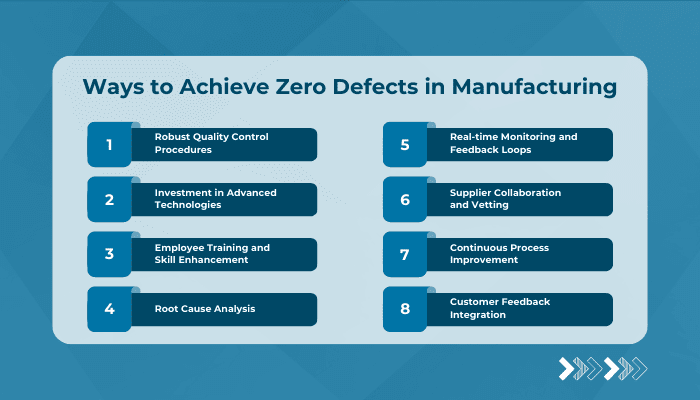
The pursuit of achieving zero defects in manufacturing is a pivotal organizational goal that underscores the commitment to delivering top-quality products. This goal requires a holistic approach to quality assurance, involving the following strategies:
Robust Quality Control Procedures
Implementing stringent quality control procedures at every stage of the manufacturing process is essential. This includes comprehensive inspections, tests, and validations to ensure that each product meets the highest standards of quality.
Investment in Advanced Technologies
Adopting cutting-edge technologies, such as artificial intelligence and machine learning, can enhance defect detection. These technologies can analyze vast amounts of data, identifying patterns and anomalies that might indicate potential defects.
Employee Training and Skill Enhancement
Equipping manufacturing staff with thorough training in quality control methodologies enhances their ability to identify defects. Regular training programs keep employees up-to-date with the latest techniques and industry standards.
Root Cause Analysis
Implementing robust root cause analysis procedures is critical when defects occur. Identifying the underlying causes of defects allows for targeted corrective actions, preventing recurrence and improving overall product quality.
Real-time Monitoring and Feedback Loops
Implementing real-time monitoring systems provides instant visibility into the manufacturing process. Any deviations from quality standards can be addressed promptly, minimizing the risk of defective products.
Supplier Collaboration and Vetting
Maintaining open lines of communication with suppliers and conducting thorough vetting processes for raw materials ensures the quality of inputs. Collaborative partnerships with reliable suppliers contribute to consistent product quality.
Continuous Process Improvement
A culture of continuous improvement encourages teams to regularly evaluate and enhance manufacturing processes. Regular reviews and adjustments prevent defects and enable teams to adapt to changing requirements.
Customer Feedback Integration
Customer feedback is a valuable resource for identifying defects that might have been missed internally. Incorporating customer insights into quality control processes enhances product offerings and customer satisfaction.
#2. Reducing the Number of Meetings Per Month by 50%
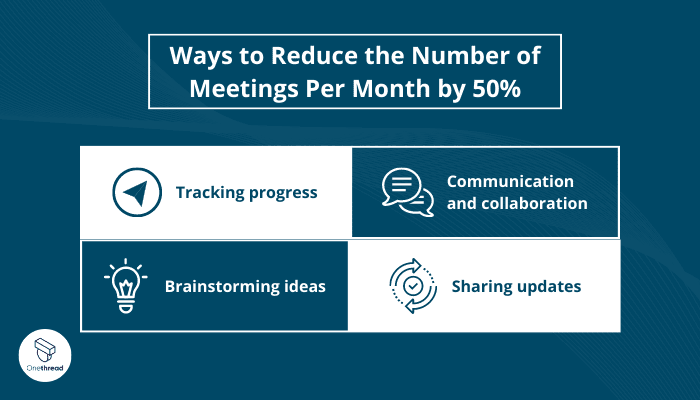
Meetings can be both beneficial for collaboration and a potential waste of time. Setting a goal to reduce the frequency of meetings by 50% offers several advantages:
Meetings without clear direction or agendas often result in endless discussions with no productive outcomes. By minimizing the number of meetings, organizations can avoid such unproductive scenarios.
Contrary to popular belief, meetings are not the sole means of keeping teams on the same page and informed about collective progress. Numerous alternatives exist to achieve these objectives more efficiently.
Tracking progress
Various tools are available that streamline the tracking process. These tools enable monitoring employee activities, task allocation, and accurate performance analytics. By leveraging reliable tracking tools, the need for frequent progress update meetings can be significantly reduced.
Brainstorming ideas
Note-keeping or task management tools equipped with discussion features prove effective for brainstorming ideas. These tools allow active documentation of ideas and facilitate organizing them based on priority. They provide a structured approach to brainstorming, eliminating the need for lengthy and inconclusive meetings.
Communication and collaboration
Communication tools offer efficient ways to filter and sort conversations. These tools enable finding specific information quickly and provide on-the-go documentation of communication. By leveraging such tools, organizations can minimize the reliance on meetings for communication purposes.
Sharing updates
Project management software platforms like Onethread offer comprehensive solution for sharing updates. These platforms facilitate timely notifications and seamless sharing of updates across multiple channels.
By utilizing project management tools, organizations can ensure efficient communication and eliminate the need for frequent status update meetings. With the aim of reducing meeting frequency, organizations can unlock increased efficiency, streamlined communication, and improved productivity.
#3. Increasing Throughput by a Factor of 100%

Increasing throughput, which refers to the number of deliverables produced within a given time, by 100% requires implementing specific practices to enhance efficiency. The following practices are essential:
Organizing Files and Documents
Maintaining an organized inventory of data is crucial for time efficiency. Sorting and organizing files and documents streamline workflows and ensure easy access to necessary information, resulting in increased productivity.
Establishing a Functional Workflow
A well-designed workflow enables teams to stay ahead of schedule by saving time and providing clarity on task progress. A functional workflow keeps the team connected and informed, fostering collaboration and enhancing efficiency. It ensures everyone is in the loop and allows for effective project management.
Clear Communication
Clear communication is vital for boosting productivity. Eliminating communication gaps, misunderstandings, and confusion is essential. Establishing dedicated channels and clear pathways for communication helps the team stay aligned, facilitates smooth information flow, and keeps everyone on the same page at all times.
#4. Achieving Carbon Neutrality: Embracing Environmental Sustainability
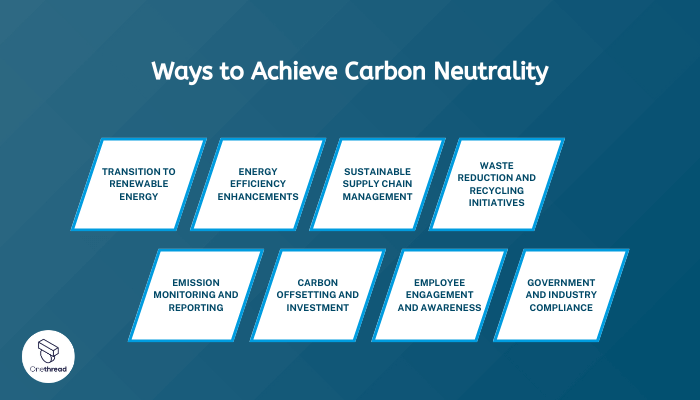
The ambitious goal of achieving carbon neutrality underscores an organization’s commitment to minimizing its carbon footprint and contributing to environmental sustainability. This multifaceted goal involves the following strategies:
Transition to Renewable Energy
Shifting to renewable energy sources, such as solar or wind power, reduces reliance on fossil fuels and significantly lowers carbon emissions. Investing in renewable energy infrastructure supports the transition to carbon-neutral operations.
Energy Efficiency Enhancements
Implementing energy-efficient practices across facilities and operations minimizes energy consumption. Upgrading to energy-efficient technologies, such as LED lighting and smart heating systems, reduces overall carbon emissions.
Sustainable Supply Chain Management
Collaborating with suppliers—such as container companies that prioritize sustainable practices—helps reduce the supply chain’s carbon footprint. Choosing suppliers that adhere to environmentally friendly practices aligns with the goal of carbon neutrality.
Waste Reduction and Recycling Initiatives
Implementing waste reduction strategies and promoting recycling programs within the organization reduces landfill waste and conserves resources. Minimizing waste production is a key component of carbon neutrality.
Emission Monitoring and Reporting
Implementing robust emission monitoring systems provides accurate data on carbon emissions. Regular reporting helps track progress towards carbon neutrality and identifies areas that require further improvement.
Carbon Offsetting and Investment
Investing in carbon offset initiatives, such as reforestation projects or renewable energy initiatives, helps balance out unavoidable carbon emissions. These investments contribute to global carbon reduction efforts.
Employee Engagement and Awareness
Raising employee awareness about the organization’s carbon neutrality goal fosters a culture of sustainability. Encouraging employees to adopt eco-friendly practices both at work and in their personal lives amplifies the impact.
Government and Industry Compliance
Staying up-to-date with governmental regulations and industry standards related to carbon emissions is crucial. Adhering to compliance measures demonstrates the organization’s commitment to environmental responsibility.
The pursuit of carbon neutrality serves as a testament to an organization’s dedication to environmental stewardship.
#5. Gaining Positive Customer Feedback by 30%
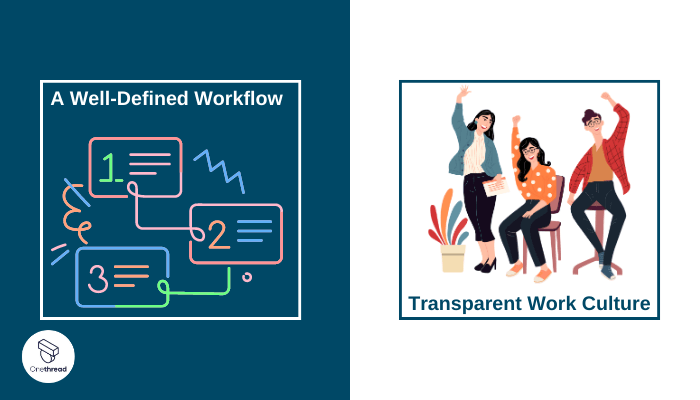
An important objective for teams is to improve customer satisfaction and garner positive feedback. Achieving this requires a strong testing and reviewing process. Consider the following elements:
A Well-Defined Workflow
A well-structured workflow ensures that all processes are in order, allows for active tracking of ongoing tasks, and prevents any stage in the work process from being overlooked. A clearly defined workflow enhances efficiency and minimizes errors or delays.
Transparent Work Culture
Maintaining open and functional communication channels is essential for fostering transparency within the team. Utilizing smart file and document sharing programs ensures seamless information exchange and keeps the team well-informed.
Employing project management tools that facilitate communication, information sharing, and file review on a single platform enhances collaboration and supports a transparent work culture.
Aligning Organizational Goals with Onethread: A Strategic Approach
Achieving organizational goals requires a combination of strategic planning, efficient collaboration, and transparent execution. Onethread emerges as a versatile tool that not only facilitates these processes but also propels your organization toward successful goal attainment. Here’s how Onethread transforms goal achievement:
Strategic Goal Alignment
Onethread empowers organizations to align teams, projects, and tasks with overarching goals. By mapping tasks and projects to specific objectives, Onethread ensures that every effort contributes directly to the organization’s larger mission, creating a cohesive roadmap for success.
Centralized Project Management
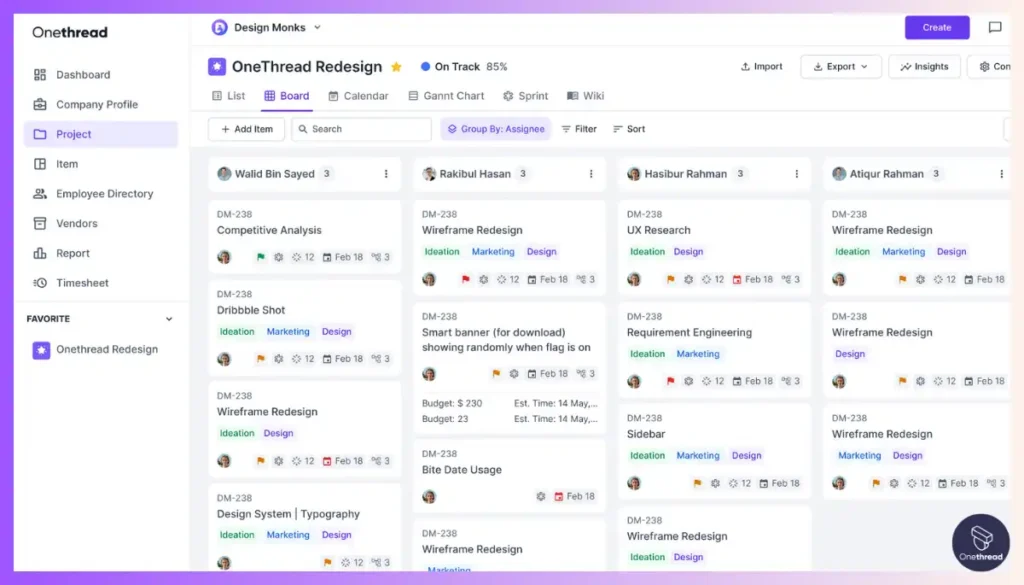
Efficiency is at the heart of achieving goals. Onethread’s project management features centralize tasks, deadlines, and responsibilities in one accessible platform. This ensures that projects are executed seamlessly, avoiding duplication of efforts and promoting optimal resource allocation.
Transparent Communication

Clear communication is pivotal for goal attainment. Onethread’s real-time messaging feature fosters open discussions, updates, and collaboration across teams. Transparent communication ensures that everyone remains informed, aligned, and engaged in working toward shared goals.
Task Accountability and Tracking

Onethread’s task management feature enhances accountability by assigning tasks and tracking their progress. With a visual representation of who is responsible for what and when, teams stay committed to their roles, reducing the risk of tasks slipping through the cracks.
Data-Driven Decision-Making
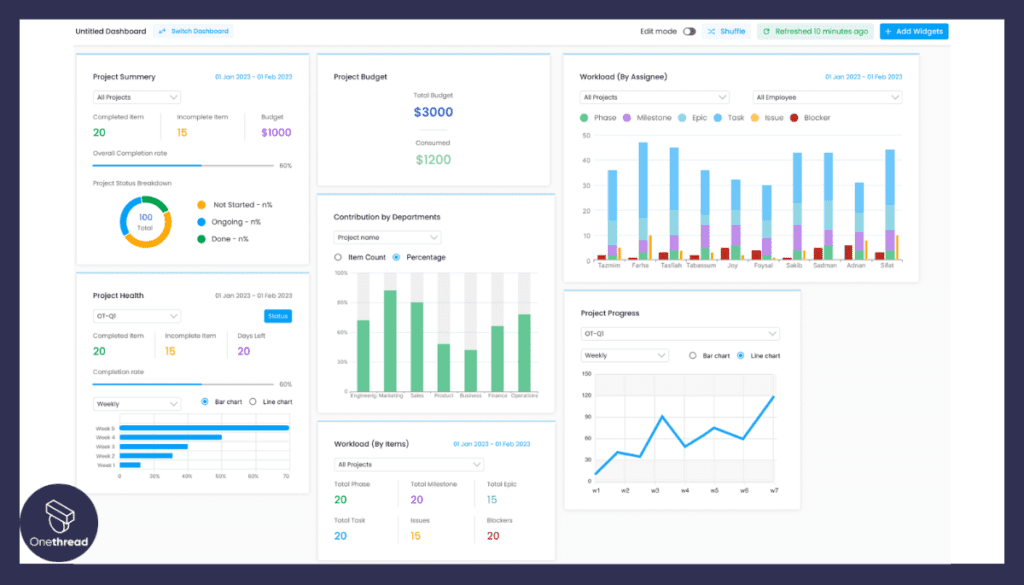
Informed decisions are critical for goal achievement. Onethread’s data visualization tools provide insights into project performance, timelines, and resource utilization. This data-driven approach empowers leaders to adjust strategies, optimize processes, and stay on track.
Collaborative Problem-Solving
Challenges are inevitable on the journey toward goals. Onethread’s collaborative environment fosters innovative problem-solving through open discussions, idea sharing, and feedback exchange. Teams collaborate seamlessly to overcome obstacles and adapt strategies in real time.
With Onethread as a driving force, your organization gains the tools to align, collaborate, and execute with precision. Embrace Onethread as your ally, and witness your organization’s goals transform from aspirations to tangible achievements.
Conclusion
In conclusion, it is crucial for organizations to have well-defined objectives in order to drive success and achieve their desired outcomes. By creating SMART goals that are specific, measurable, achievable, realistic, and time-bound, companies can effectively track their progress and make necessary adjustments along the way.
Furthermore, aligning these goals with the company’s vision and values ensures that every action taken contributes to the overall mission.
By implementing these strategies for goal setting and management, organizations can create a clear path towards success while fostering a motivated workforce dedicated to achieving common objectives.
Achieve your organizational goals with Onethread! Streamline workflows, enhance collaboration, and track progress effortlessly. Take control of your team’s success today. Try Onethread for seamless goal management.
Frequently Asked Questions
How Can Organizational Goals Contribute To Employee Motivation And Engagement?
Organizational goals can contribute to employee motivation and engagement by providing a clear direction and purpose for their work. When employees understand how their efforts align with these goals, they feel motivated to work towards them and become more engaged.
How Can Setting Priorities And Allocating Resources Effectively Help In Achieving Organizational Goals?
Setting priorities and allocating resources effectively helps you achieve goals by ensuring that the right tasks are done in a timely manner with the necessary resources. It keeps you focused, organized, and increases efficiency towards goal attainment.
What Are Some Common Challenges Faced When Aligning Goals With Company Vision And Values?
Some common challenges faced when aligning goals with company vision and values include resistance to change, lack of clarity in communication, conflicting priorities, and difficulty in measuring progress towards the desired outcomes.
How Can Well-Defined Objectives Help In Measuring The Success And Progress Of An Organization?
Well-defined objectives can help you measure the success and progress of your organization by providing clear guidelines for what needs to be achieved. They serve as benchmarks that allow you to track your performance and determine if you are on track towards achieving your goals.
What Are Some Key Factors To Consider When Creating Smart Goals For Organizational Success?
When creating smart goals for organizational success, consider key factors such as specificity, measurability, attainability, relevance, and time-bound nature. These factors help ensure that the goals are clear, achievable, and aligned with the organization’s overall objectives.
